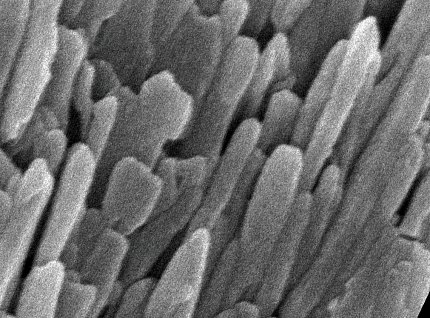Complexity of Tooth Enamel Revealed at Atomic Level

Photo: Karen DeRocher, Northwestern University
Scientists used a combination of advanced microscopy and chemical detection techniques to uncover the structural makeup of human tooth enamel at unprecedented atomic resolution, revealing lattice patterns and unexpected irregularities. The findings could lead to a better understanding of how tooth decay develops and might be prevented. The research was supported by NIDCR and findings appeared in Nature.
“This work provides much more detailed information about the atomic makeup of enamel than we previously knew,” said Dr. Jason Wan, a program officer at NIDCR. “These findings can broaden our thinking and approach to strengthening teeth against mechanical forces, as well as repairing damage due to erosion and decay.”
Your teeth are remarkably resilient, despite enduring the stress and strain of biting, chewing and eating for a lifetime. Enamel—the hardest substance in the human body—is largely responsible for this endurance. Its high mineral content gives it strength. Enamel forms the outer covering of teeth and helps prevent tooth decay, or caries.
To survey enamel at the tiniest scales, researchers use microscopy methods such as scanning transmission electron microscopy (STEM), which directs a beam of electrons through a material to map its atomic makeup.
STEM studies have shown that at the nanoscale, enamel comprises tightly bunched oblong crystals that are about 1,000 times smaller in width than a human hair. These tiny crystallites are made mostly of a calcium- and phosphate-based mineral called hydroxylapatite. STEM studies coupled with chemical detection techniques had hinted at the presence of much smaller amounts of other chemical elements, but enamel’s vulnerability to damage from high-energy electron beams prevented a more thorough analysis at the necessary level of resolution.
“Human enamel is much more chemically complex than we thought,” said co-first author Dr. Paul Smeets, a research associate at Northwestern University. The findings could lead to new approaches to toughen enamel and prevent or reverse cavity formation.
